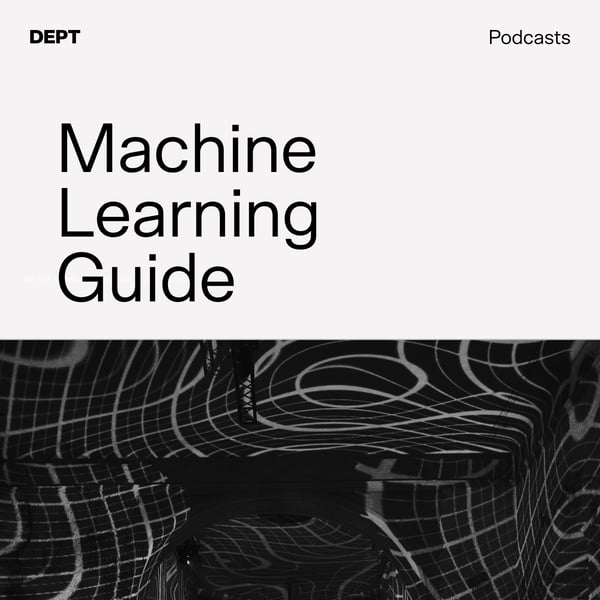MLA 024 Code AI MCP Servers, ML Engineering
Machine Learning Guide
OCDevel
4.9 • 848 Ratings
🗓️ 13 April 2025
⏱️ 44 minutes
🧾️ Download transcript
Summary
Tool Use and Model Context Protocol (MCP)
Notes and resources at ocdevel.com/mlg/mla-24
Try a walking desk to stay healthy while you study or work!
Tool Use in Vibe Coding Agents
- File Operations: Agents can read, edit, and search files using sophisticated regular expressions.
- Executable Commands: They can recommend and perform installations like
pipornpminstalls, with user approval. - Browser Integration: Allows agents to perform actions and verify outcomes through browser interactions.
Model Context Protocol (MCP)
- Standardization: MCP was created by Anthropic to standardize how AI tools and agents communicate with each other and with external tools.
- Implementation:
- MCP Client: Converts AI agent requests into structured commands.
- MCP Server: Executes commands and sends structured responses back to the client.
- Local and Cloud Frameworks:
- Local (S-T-D-I-O MCP): Examples include utilizing Playwright for local browser automation and connecting to local databases like Postgres.
- Cloud (SSE MCP): SaaS providers offer cloud-hosted MCPs to enhance external integrations.
Expanding AI Capabilities with MCP Servers
- Directories: Various directories exist listing MCP servers for diverse functions beyond programming. modelcontextprotocol/servers
- Use Cases:
- Automation Beyond Coding: Implementing MCPs that extend automation into non-programming tasks like sales, marketing, or personal project management.
- Creative Solutions: Encourages innovation in automating routine tasks by integrating diverse MCP functionalities.
AI Tools in Machine Learning
- Automating ML Process:
- Auto ML and Feature Engineering: AI tools assist in transforming raw data, optimizing hyperparameters, and inventing new ML solutions.
- Pipeline Construction and Deployment: Facilitates the use of infrastructure as code for deploying ML models efficiently.
- Active Experimentation:
- Jupyter Integration Challenges: While integrations are possible, they often lag and may not support the latest models.
- Practical Strategies: Suggests alternating between Jupyter and traditional Python files to maximize tool efficiency.
Conclusion
- Action Plan for ML Engineers:
- Setup structured folders and documentation to leverage AI tools effectively.
- Encourage systematic exploration of MCPs to enhance both direct programming tasks and associated workflows.
Transcript
Click on a timestamp to play from that location
| 0:00.0 | Machine Learning applied episode 24, Code AI Part 3. |
| 0:05.6 | In this episode, I will talk about tool use within vibe coding agents, such as browse files and execute command. |
| 0:14.4 | And I'll contrast those with MCP servers or model context protocol. |
| 0:20.3 | And MCPs are a very powerful tool that allow a lot of expansiveness within vibe coding. |
| 0:27.6 | And then at the end of the episode, I'll finally bring it back to machine learning engineering. |
| 0:32.6 | So if you're an MLG veteran, your moment has finally come in this three-part series. If you're not interested in |
| 0:39.4 | machine learning as a topic, once I get into the segment about using this tooling for machine |
| 0:45.8 | learning specifically, you can just skip to the next episode. Now let's talk about tool use and |
| 0:52.2 | model context protocol. So tool use is the essence of the agentic tooling of these code AI tools. |
| 1:00.0 | Like I said, there's two ways to interface with a vibe coding tool. |
| 1:05.0 | The first way is that it can auto-complete lines of code or blocks of code in your inline editor of an open file. |
| 1:14.2 | That's the traditional way to work with these tools. |
| 1:16.9 | And it's still a very powerful, very sophisticated way. |
| 1:20.4 | The tooling is improving all the time. |
| 1:22.0 | It used to be that it would just suggest the completion of a single line that you're currently typing. Then they started adding |
| 1:29.1 | that it would complete a block of code so it can write entire functions at a time. And now it's so |
| 1:35.4 | cool. It can actually suggest cross-file edits. It can suggest not just the insertion of a block of code, but the modification and deletion of |
| 1:47.6 | snippets of existing code. So when you hit tab, it will really just modify your whole file, |
| 1:53.3 | making refactors and such. And the other way to work with these tools is via the agent. |
| 1:59.8 | The sidebar that you open up has a prompt |
| 2:03.2 | input field where you type your prompt and hit enter. And the typical tool here in terms of |
| 2:10.5 | tool use is read file and edit file. And that's read underscore file and edit underscore file. Those are tools that it calls |
... |
Please login to see the full transcript.
Disclaimer: The podcast and artwork embedded on this page are from OCDevel, and are the property of its owner and not affiliated with or endorsed by Tapesearch.
Generated transcripts are the property of OCDevel and are distributed freely under the Fair Use doctrine. Transcripts generated by Tapesearch are not guaranteed to be accurate.
Copyright © Tapesearch 2025.

